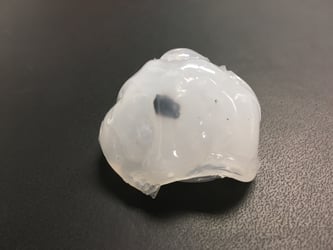
Recently I performed a trial at a PVC sheet extruder who produces roofing. It took them 8-12 hours (an entire shift) to complete a full teardown and clean out PVC before they could go into the next resin. PVC sheet extrusion can be a bit of a tricky application.
Today we will look at 5 tips for processing heat-sensitive resins like PVC.
1.) Watch for Degradation and ContaminationWhen processing heat-sensitive resins such as PVC or EVOH, there is always a great susceptibility to degradation. These resins burn very easily It is important to control heats when processing because high temperatures will lead to burning, and cooler temperatures can lead to excessive shear. With less heat-sensitive materials, residual polymer left in the machine will degrade over a long period of time, but in the case of PVC, degradation will occur immediately.
2.) Heat-Sensitive Resins Tend to Have Residue IssuesIn addition to the heat sensitivity, ingredients in low temp resins like the vinyl content in PVC and EVOH gives rise to a stickier residue which can also be problematic to remove. When processing these resins, it makes it extremely important to ensure all residue is cleaned out of the screw and barrel to avoid excessive degradation.
3.) Use Chemical Purging Compounds to Reduce These FactorsOne solution to effectively cleaning these problematic resins is the use of a chemical purging compound. We tried using a chemical purging compound using a 3-step process which would allow us to remove the PVC first AND then remove contamination without taking apart the machine.
Chemical purge compounds contain foaming agents that are heat activated- these help to remove stubborn degradation and hard-to-remove residue, which is often experienced with PVC. To work effectively, the purge compound does require heat and containment so it is important to ensure we get the heat needed to clean well BUT without burning any residual resin that may still be inside the barrel.
4.) Flush Out the Heat-Sensitive ResinFlush as much of the heat-sensitive resin out of the machine as you can by using any virgin resin stiffer than the incumbent resin. At the trial, we used an HDPE to flush out as much PVC as possible. The chemical purge was then introduced. As soon as the purge was exiting the die, the screw speed was reduced to the minimum RPM and allowed to purge slowly. This ensured any residual PVC was emptied.
5.) Do Not Increase Heats Until You Are Sure the Heat-Sensitive Resin was RemovedIt is important to perform the initial purge at the processing temperature of the resin. i.e. Do not increase heats inside the barrel until you are certain all the PVC has been removed.
When working with the sheet extruder, once the first soak was complete, the temperature was increased in all sections. We subsequently had a second soak for an additional 15 minutes. By increasing heat, the foaming agents in the chemical purge are activated allowing them to remove contamination.
Although some processors are wary of soak cycles, we hope you can look at the bigger picture here. The entire purge process took 1 hour and 45 minutes, leading to over 80% reduced machine downtime.
When it comes to heat-sensitive materials, extra steps do need to be taken, but they can be cleaned very effectively when using this approach.
Ready to reduce your production downtime to protect your profits? Learn more about how purging compounds and process efficiency work in tandem.

Kiran Raza is an Asaclean Purging Expert & Technical Sales Representative. She's worked in the plastics industry for nearly 20 years and has expertise In Bio-Medical Materials, Polymer Processing, and Materials Testing.







Comments